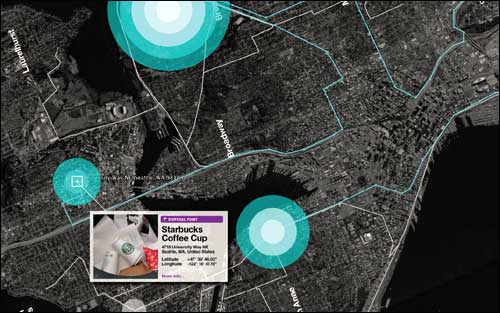Every day, we throw away old electronics, packaging from new products and other detritus without thinking twice about what happens after we drop these items in the garbage bin. A team of researchers from the SENSEable City Laboratory at the Massachusetts Institute of Technology hopes to raise awareness with Trash Track, a project that used wireless tags to track, in real time, everyday waste items as they traveled through a city’s sanitation system.
Trash Track was developed for an exhibition sponsored by the Architectural League of New York, focusing on how networking and other technologies can influence the design of architecture and urban spaces to make them more responsive to people and the environment. “We wanted to show how pervasive technologies could make our cities more sustainable,” says Carlo Ratti, director of the MIT lab.

The team considered using GPS devices, but they wouldn’t work inside trucks so it developed special tags that use cellular technology, and software to recognize individual tags and triangulate their location. This enabled the researchers to show how the trash moves from the point at which it is tossed out to the point at which it’s recycled or sent to a landfill. To protect the tags from being banged around or crushed, they were encased in foam, resin or plastic.
The researchers distributed 3,000 tags to volunteers in New York and Seattle, who attached them to their rubbish before throwing the items away. The researchers tracked each item’s final journey for one month. Volunteers could follow the path of their trash online, and the public can view the migration patterns at the Architectural League in New York and at the Seattle Public Library, where the project will be exhibited until Nov. 7.
While Trash Track was designed to get people thinking about what happens to the items they throw away, there is potential to develop tracking systems for discarded electronics, to ensure they are recycled properly. “We are working on both the tags and the data analysis and might run another experiment later,” Ratti says.
The lab didn’t consider using RFID for the project because the technology’s relatively short read range and limited infrastructure would leave no way to track items as they traveled through the “removal chain.” But as RFID becomes ubiquitous, Ratti says, it could be used to track items that need recycling.
“You can imagine a time in the future when everything will have a smart tag and, because of that, we will have no waste anymore,” he says. “Everything will be traceable, and we’ll be able to recycle everything.”

